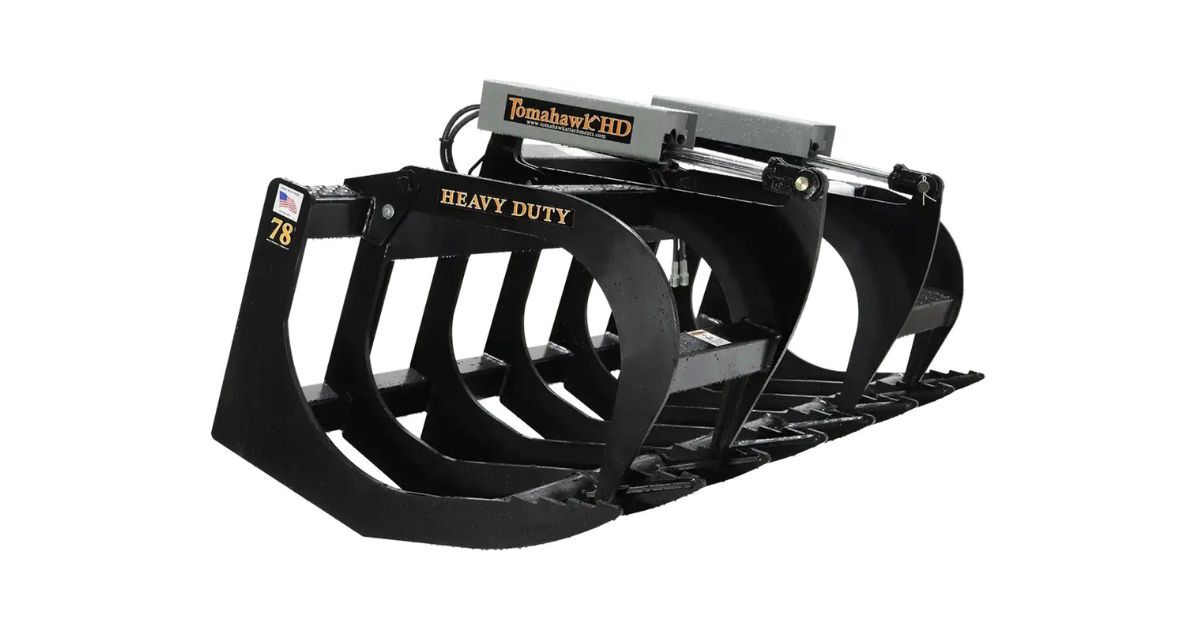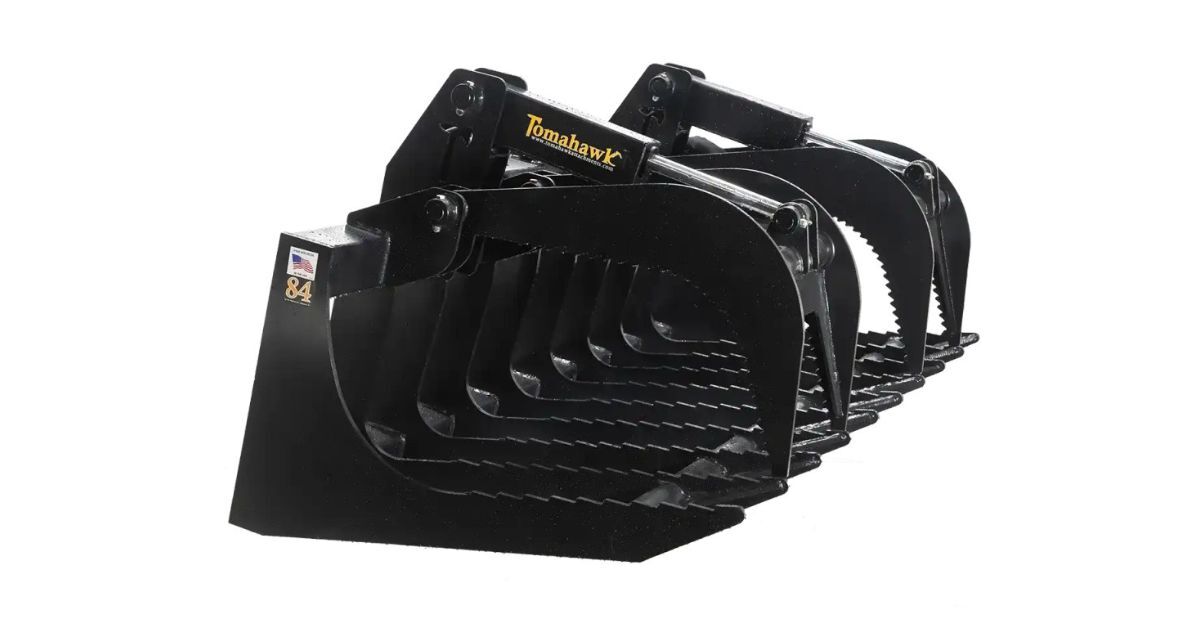Nov 12th 2025
11 Tips for Clearing Storm Debris Faster With a Root Grapple
Storm cleanup can feel overwhelming when your property is covered in piles of fallen branches, uprooted trees, and scattered debris. Luckily, a root grapple attachment can transform this daunting task into manageable work. This specialized tool features powerful hydraulic arms that can grasp and move oddly shaped branches, tree trunks, and root balls without losing their grip. A root grapple also helps you work smarter, not harder, by minimizing manual labor and cleanup time.
In the sections ahead, you’ll discover 11 tips for clearing storm debris faster with a root grapple that will expedite your storm cleanup project. Read on to learn what it takes to restore order to your property and get back to normal life sooner.
1. Plan Your Cleanup Route Before Starting
Survey your property thoroughly before firing up your equipment. Walk the entire area to identify the largest debris pieces, potential hazards, such as downed power lines, and the most efficient path for debris removal. Mark any underground utilities or septic systems that could be damaged by heavy equipment.
Create a plan for debris removal that minimizes backtracking. Start with the largest obstacles that block access to other areas, then work systematically through smaller debris. This approach saves time and prevents you from having to move the same pile multiple times.
2. Sort Debris by Size and Type
Separate your debris into distinct categories before loading. Create separate piles for large logs, branches, leaves and small twigs, and root balls. This organization streamlines the disposal process and allows you to handle each type of debris with the most appropriate technique.
By sorting first, you can adjust your approach and maintain steady progress throughout the cleanup. For instance, large logs require different grappling techniques than tangled branches. Some disposal sites also require materials to be separated by type, making this step essential for efficient hauling and compliance.
3. Choose the Right Grapple Size for Your Debris
Most storm cleanup requires a balance between power and versatility. Match your root grapple size to the debris you're handling most frequently. Oversized grapples may struggle with precision when picking up smaller branches, while undersized units can't handle large tree trunks effectively.
Consider the weight capacity of your skid steer grapple when selecting debris pieces. Overloading your equipment leads to inefficient operation and potential mechanical issues. Check your attachment's specifications and stay within recommended load limits for optimal performance.
4. Master Proper Grappling Techniques
Position your grapple arms around the debris before closing them completely. This technique allows you capture the maximum amount of material while maintaining a secure grip. Avoid grabbing debris from just one end, as this can cause materials to slip during transport.
Use a rolling motion when picking up long branches or logs. Approach the debris at a slight angle and roll the grapple underneath while closing the arms. This method provides better control and reduces the chance of dropping materials during lifting.

5. Maintain Steady Hydraulic Pressure
Smooth, controlled movements increase efficiency and reduce wear on your hydraulic system. Keep consistent hydraulic pressure when gripping debris to prevent slipping. Rapid pressure changes can cause materials to shift or fall, requiring you to pick up the same pieces multiple times.
Monitor your hydraulic fluid temperature during extended use. Overheated fluid reduces system performance and can damage seals and other components. Take breaks when necessary to allow the system to cool, especially during hot weather or intense operations.
6. Work From the Outside In
Begin cleanup at the perimeter of your debris field and work toward the center. This approach prevents you from boxing yourself in with unmoved debris and ensures you always have clear escape routes. It also allows you to establish organized staging areas as you make progress.
Clear access paths first to enable efficient movement throughout the cleanup area. Wide, clear paths reduce the time spent maneuvering around obstacles and allow you to maintain steady progress. Plus, the other tips for clearing storm debris faster with a root grapple become more effective when you have proper access to all areas.
7. Stack Debris Strategically
Create organized piles that maximize your hauling efficiency. Stack similar materials together with the largest pieces on the bottom for stability. This organization makes loading onto trucks or trailers much faster and reduces the number of trips required for disposal.
Choose staging areas that provide easy access for both your skid steer and disposal vehicles. Position your debris piles in areas with solid, level ground that can support heavy equipment. Soft or uneven surfaces make pickup difficult and can cause your equipment to become stuck.
8. Use the Grapple's Full Range of Motion
Take advantage of your grapple's ability to rotate and tilt for maximum efficiency. Rotating the grapple allows you to position debris precisely without repositioning your entire machine. The tilt function helps you maintain control when working on slopes or uneven terrain.
Practice smooth transitions between grapple positions to maintain a continuous workflow. Jerky movements waste time and put unnecessary stress on your equipment. Seamlessly operating your equipment becomes second nature with practice and significantly improves your cleanup speed.
9. Keep Cutting Tools Accessible
Having cutting tools readily available prevents workflow interruptions. Position chainsaws and hand tools within easy reach for quick debris modification. For instance, large branches often need trimming to fit properly in your grapple.
Consider the sequence of cutting and grappling operations. Sometimes cutting large pieces into manageable sections before attempting to grapple them is more efficient than leaving them whole. Other situations call for moving intact pieces to a cutting area where you have more working space.

10. Monitor Equipment Performance Continuously
Regularly check your grapple arms, pins, and hydraulic lines during operation. Storm debris can be abrasive and may damage your equipment. Early detection of issues prevents costly breakdowns and keeps your cleanup project on schedule.
Clean debris from your grapple arms frequently to maintain proper closing action. Accumulated dirt, leaves, and small branches can prevent the arms from closing completely, reducing your gripping effectiveness.
11. Optimize Your Loading Pattern
Develop an efficient loading sequence that maximizes each grapple cycle. Instead of randomly grabbing debris, plan your approach to pick up the maximum amount of material with each operation. This systematic approach significantly reduces the total number of cycles required.
Consider the weight distribution in your grapple when loading mixed debris types. Heavy logs should be balanced with lighter branch material to stay within your equipment's capacity while maximizing each load. Proper weight distribution also improves stability during transport.
Transform Your Storm Cleanup
Implementing these strategies will dramatically improve your storm cleanup efficiency while reducing equipment wear and operator fatigue. Remember that consistent practice with these methods builds muscle memory and increases your overall productivity.
The key to successful storm cleanup lies in using robust equipment. Take on debris, logs, brush, and more with a powerful skid steer grapple from Tomahawk Attachments. Built for strength, precision, and durability, our attachments will help you tackle even the toughest post-storm challenges with confidence and efficiency. Browse our selection today.

